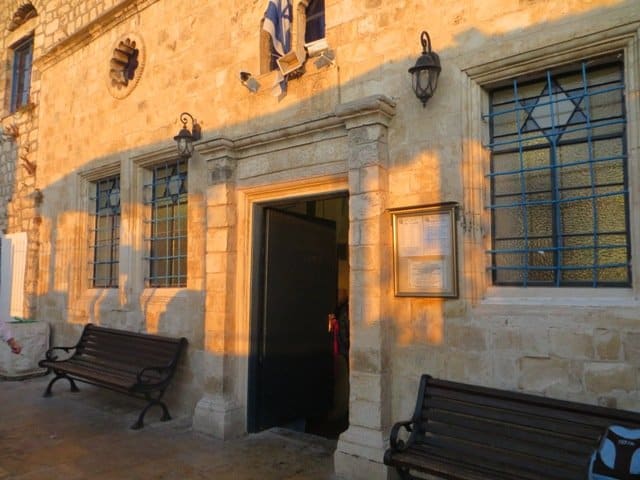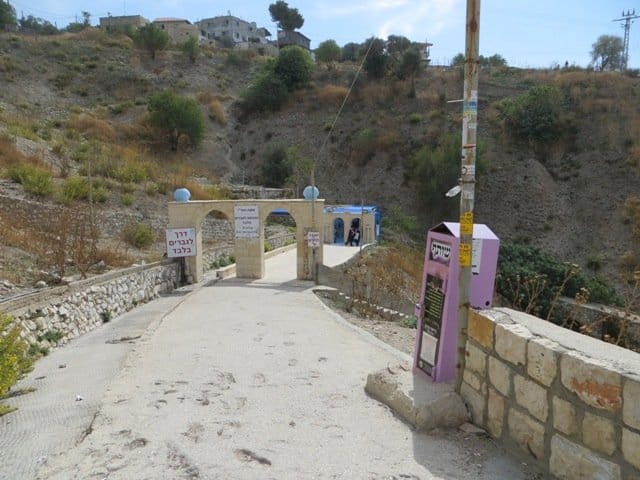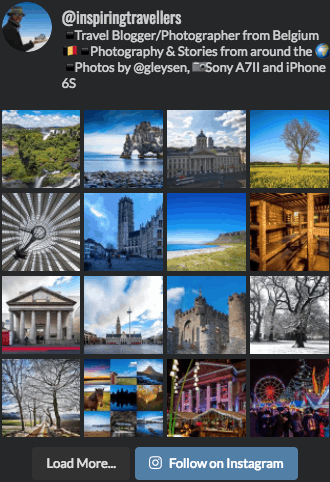In today’s guest post we’re going on a mystical journey to a fascinating Israeli city…Safed, the “City of Kabbalah.”
Thirty years ago, when I first came to live in Safed, the mountaintop city was a small backwater town with a tiny tourist infrastructure and even fewer amenities for visitors. All of that changed in the ’90s when Madonna “discovered” Jewish mysticism and began to travel to Safed to explore the “City of Kabbalah.” Kabbalah developed in Safed in the 1500s when Jewish mystics immigrated to the town after being driven from their homes in Spain by the Spanish Expulsion of 1492. These great Kabbalistic rabbis studied and taught the secrets of the Torah — some say, through divine inspiration — and ever since the town has been known as a special place of special spirituality and creativity.
Most tourists spend a few hours wandering Safed’s windy alleys and hidden lanes where the art galleries and the ancient synagogues are located but if you’re looking for an opportunity to experience some spirituality, check out five inspiring things to do in Safed.
Take a plunge.
According to Jewish tradition, immersing in a mikve — a ritual bath — cleanses you spiritually. Mikves are built to exact specifications including the requirement that some of the water originate from a fresh water source, the size of the mikve and requirements relating to the materials that can be used in the mikve’s construction. The Ari Mikve is open for men 24/7. It’s a natural spring mikve where, according to legend, Rabbi Yitzhak Luria — the Ari, the great 16th century kabbalist — immersed. Hassidic Jews believe that when a man immerses in the Ari mikve, he is automatically cleansed of all of his sins.
The Ari mikve is directly below the Old City of Safed along the southern side of the cemetery. A large archway leads into the mikve area. The Ari mikve is not open to women but nearby, next to the Breslev synagogue, women can enter the Breslev mikve where they’ll receive a full explanation of a Jewish woman’s obligation to immerse and the spiritual benefits that she brings to her entire family when she follows this important tradition.
Explore Kabbalah.
There are numerous venues in Safed where you can learn more about Jewish mysticism but for a visual experience, you can spend time in some of the art galleries which are maintained by Safed residents who combine Kabbalah study with their art. Avraham Lowenthal and Dovid Friedman create paintings and mandelas that express their understanding of various Kabbalistic concepts. Sheva Chaya Servetter paints Hassidic-inspired watercolors and offers workshops about the “Kabbalah of Glassblowing.” Daniel Flatauer brings the kabbalistic themes of molding and clay into his ceramics work.
Get your name read.
According to Kabbalah every Torah verse, every word and every Hebrew letter has a meaning within Jewish mysticism. A person’s name has a great influence in establishing their personality and forming their strengths and weaknesses. Head on over to the Ascent Institute where you can ask the rabbi who sits in the library downstairs to tell you what your name means according to the study of kabbalah. You can also sit in on one of Ascent’s classes at your leisure — the classes are free and cover a wide variety of subjects ranging from Judaism to Hassidic philosophy to Kabbalah.
Participate in an archaeological excavation.
The Livnot U’Lehibanot (To Build and Be Built) Israel Experience Program conducts archaeological excavations that allow participants to dig out some of the ruins of 16th century Safed. Safed was destroyed by two earthquakes, one in 1759 and one in 1837. The original structures, however, were not demolished, though they were buried under landslides. Livnot, together with the Israel Lands Authority and the Israeli government, has been excavating in the Old Jewish Quarter since 1980. Portions of these excavations are now a National Heritage Site. If you don’t have time to do the digging, stop in and view the excavations with a walk through the Time Tunnel that takes you into structures that are over 500 years old.
Talk to people.
As you’re walking through the Old City you’ll come across many people with fascinating stories. You’ll meet shopkeepers, artists and residents who have immigrated from many different countries including Russia, Romania, Morocco, Tunisia, Iran, India, Greece, the United States, Canada, Australia, Mexico, France and other areas. There are also people whose families can be traced back to the original families to Safed from Spain and Portugal in the late 1400s and throughout the 1500s. You’ll meet religious Jews who follow Hassidic traditions, non-religious Jews who don’t follow any of the traditions and people who observe many different levels of Judaism in-between these two extremes. The one thing that everyone has in common is that they’re all happy to talk and share their stories and the stories of their families. Take some time and listen.
Bio: Laurie Rappeport has been living in Safed for 30 years. She worked in the local Tourist Information Center for 13 years and continues to be active in promoting tourism to Safed.



